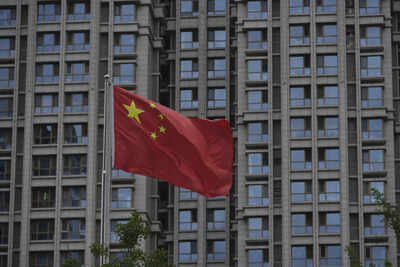‘Chinese threat’ that made Donald Trump make deal with China is now worrying TV, speaker, smartwatch and other electronics makers in India

China’s control over critical minerals, also called Rare earth metals/minerals, is reportedly a powerful bargaining chip in trade talks, as seen in recent US-China discussions. By easing export restrictions, China can secure concessions, such as tariff relief or relaxed visa policies, as hinted in negotiations where Trump claimed progress on access to Chinese magnets and mineralsThe America’s reliance on China for these minerals is seen as a strategic vulnerability. In April, China reportedly restricted rare earth mineral exports in response to Trump’s tariff increases. The export restrictions on rare earth minerals is said to have made President Donald Trump furious. On June 11, Trump announced on Truth Social that China agreed to supply the U.S. with these minerals as part of a trade deal, calling it “done”.
Rare Metal worries ‘come to India’
Similar worries about rare earth metals has reportedly come closer home. China’s export controls on rare earth metals, particularly Terbium and Dysprosium used in Neodymium-iron-boron (NdFeB) magnets, is reportedly creating panic among speakers, wearables, and television and some other consumer electronic manufacturers in India. According to a report in Economic Times, China’s export control licensing of rare earth metals is worrying electronics companies who are sitting on thin supplies of permanent magnets with the threat of production coming to a standstill looming large, industry executives and associations said.Among the seven rare earth metals facing restricted exports, Terbium and Dysprosium are critical components in Neodymium-Iron-Boron (NdFeB) magnets, or permanent magnets, which is the preferred choice for high-performance, portable and compact audio products. These magnets are said to be vital for high-performance audio products, constitute 5-7% of the bill of materials, with India importing nearly 100% from China, per ELCINA‘s whitepaper.ELCINA warned that the inability to procure NdFeB magnets could halt speaker production in Noida, Chennai, and Pune, potentially forcing OEMs to import finished speakers, undermining the “Make in India” initiative. Chinese port delays, requiring end-use declarations, are further disrupting speaker assembly units, delaying supplies to domestic TV and audio brands.According to the report, the industry body has claimed that shipments of magnets and even finished products with embedded magnets are being stopped at Chinese ports, pending end-use declarations. This is leading to production disruptions of speaker assembly units in India, delaying supplies to customers including domestic TV and audio brands.Indian manufacturers and importers are seeking government-issued end-use certificates to meet Chinese export requirements. IESA president Ashok Chandak attributed the crisis partly to India’s lack of local processing capabilities and overreliance on imports, despite having critical mineral reserves. He told ET that the current situation can be partially blamed on Indian manufacturers who ignored the risk back in 2020.Since China’s April export control announcement, magnet prices have risen 15%, with costs doubling when sourced from Japan, Vietnam, or recycled Indian suppliers, per ELCINA’s analysis.
What are ’17 Elements’ called Rare Earth Minerals
Rare earth minerals are a group of 17 elements, including Scandium, Yttrium, and the 15 Lanthanides, found in the Earth’s crust. Despite their name, they are relatively abundant, but extracting and processing them is complex, costly, and environmentally damaging. These minerals are critical for high-tech industries, powering everything from smartphone screens and electric vehicle motors to defense systems and medical devices.





